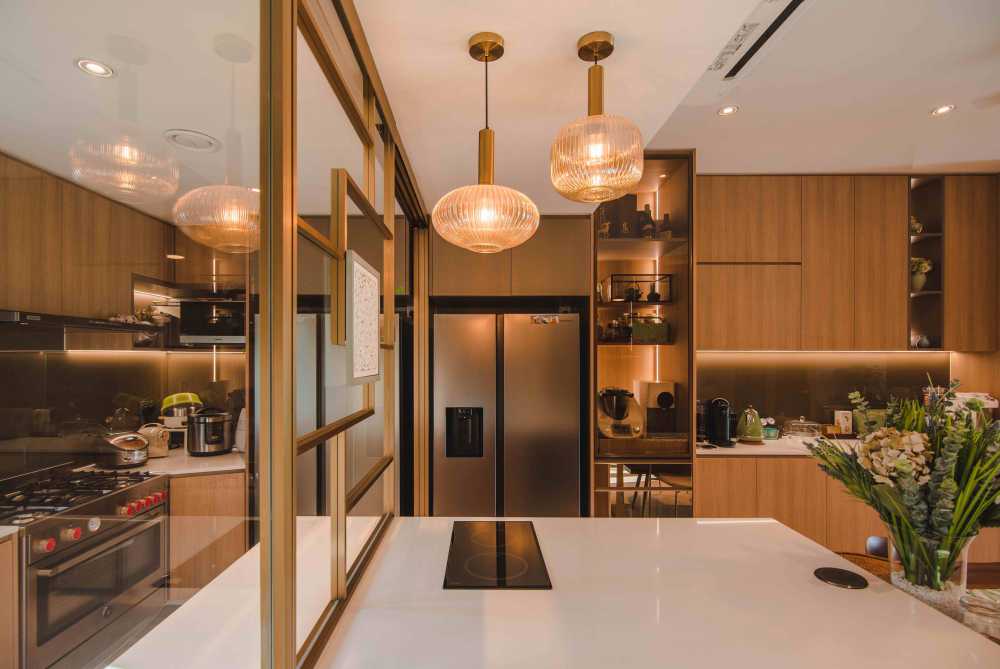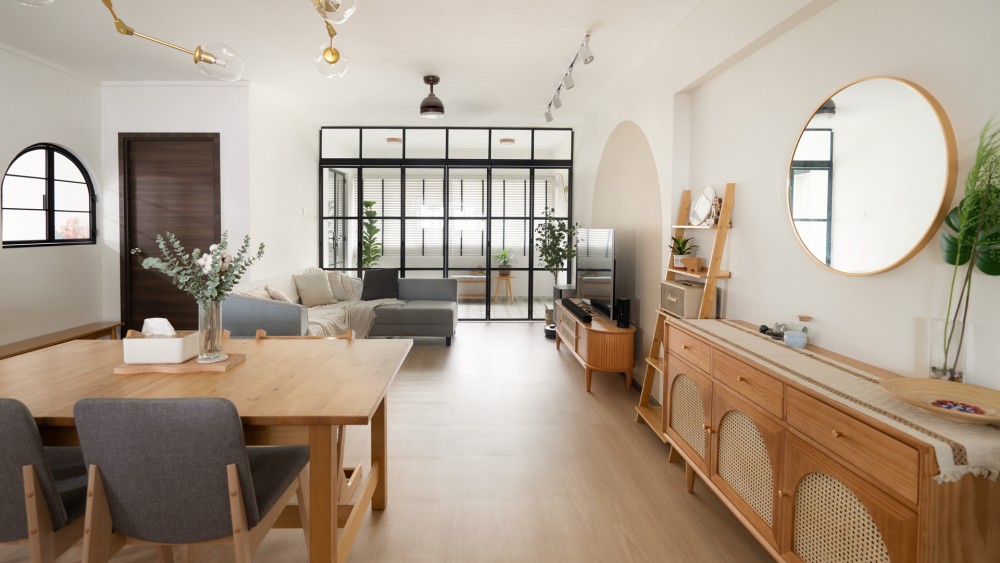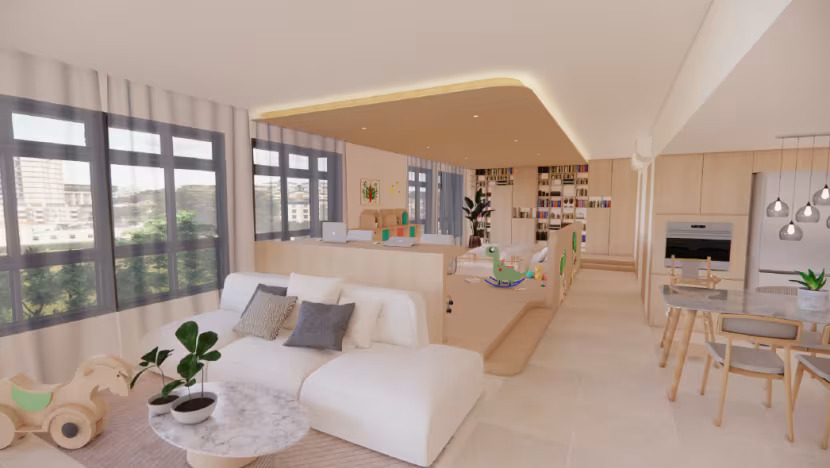Avoid These Newbie Mistakes That Will Make Or Break Your Renovation
Renovating your home can be an exciting yet daunting task.
In Singapore, where space is often limited and costs can quickly escalate, it’s crucial to approach renovations with careful planning and realistic expectations.
This article will highlight key mistakes to avoid for a successful renovation, ensuring that your efforts result in a comfortable, stylish, and functional living space.
1. Inadequate Budget Planning
One of the most common mistakes in home renovation is failing to set a realistic budget. Many first-time renovators underestimate the costs involved, often overlooking expenses such as permits, unforeseen repairs, and additional furnishings.


Unforeseen repairs are another significant expense that can catch you off guard.
If you’ve bought a resale flat or condo rather than a new unit, hidden issues like faulty wiring, plumbing problems, or structural damages may emerge once the renovation work begins. These problems require immediate attention and additional funds, which can strain an already tight budget.
On top of that, new homeowners tend to underestimate the amount they need to budget for furniture and decor. While the focus often remains on the major construction work, the costs of purchasing new furniture, lighting, and other decorative items can escalate rapidly. These elements are essential to complete the look and functionality of your renovated space, and their costs should be factored into the budget from the start.
To avoid these pitfalls, start by creating a comprehensive budget that includes all potential costs. Research and gather detailed quotes from contractors, suppliers, and other professionals involved in the renovation. Break down the budget into specific categories such as construction, materials, permits, furnishings, and miscellaneous expenses. This detailed approach will help you understand the full scope of the financial commitment required.
It’s also wise to set aside a contingency fund for unexpected expenses. A good rule of thumb is to allocate an additional 10-20% of the total budget for contingencies. This fund acts as a financial cushion, allowing you to handle surprises without derailing your renovation plans. Whether it’s dealing with unforeseen repairs or upgrading materials for better quality, having this extra buffer ensures you can manage any unexpected costs smoothly.
By planning meticulously and accounting for all potential expenses, you’ll be better prepared to handle any surprises that come your way. This proactive approach not only helps in managing the budget effectively but also ensures a smoother and more successful renovation process, allowing you to enjoy your newly renovated space without financial stress.
2. Skipping Professional Help
While the DIY approach may seem appealing and cost-effective, it can lead to costly mistakes if you lack the necessary skills and knowledge. Hiring qualified interior designers can save you time, money, and stress in the long run. Professionals bring expertise and experience to the table, ensuring that your renovation is done right the first time.
For first-time homeowners, it’s especially important to consider hiring an interior designer rather than just a contractor.


Designers not only handle the technical aspects of the renovation but also provide valuable insights into creating a cohesive and functional living space tailored to your lifestyle. They can guide you through the entire process, from conceptualizing the design to selecting materials and furnishings, ensuring that every detail aligns with your vision and needs.
In contrast, contractors typically focus on executing the plans provided to them. They rely on you to make the design decisions and provide detailed instructions. This can be challenging for new homeowners who might not be familiar with what to look out for or how to optimize their space. Most contractors will simply build what you ask for, even if the design is impractical or doesn’t suit your lifestyle, without offering much feedback or value-adding to the project.
In Singapore, where renovation regulations and standards are stringent, finding reputable professionals is crucial. Do your research, read reviews, and ask for recommendations to find the right experts for your project. By choosing experienced designers, you can ensure that your renovation is smooth, compliant with regulations, and results in a home that truly meets your needs and expectations.
3. Ignoring Space Constraints
In Singapore, most people live in small apartments where space is at a premium. Ignoring these constraints during renovation can result in a cluttered and inefficient home. As such, it’s essential to prioritize space optimization and consider multifunctional furniture and smart storage solutions.
Also, as a first-time homeowner, you may not realize how many items you’ve accumulated until you actually move out of your parents’ home and take all your belongings with you. This can lead to an overwhelming amount of items that need to be stored and organized in your new space. Therefore, it’s essential to plan for adequate storage solutions from the beginning.
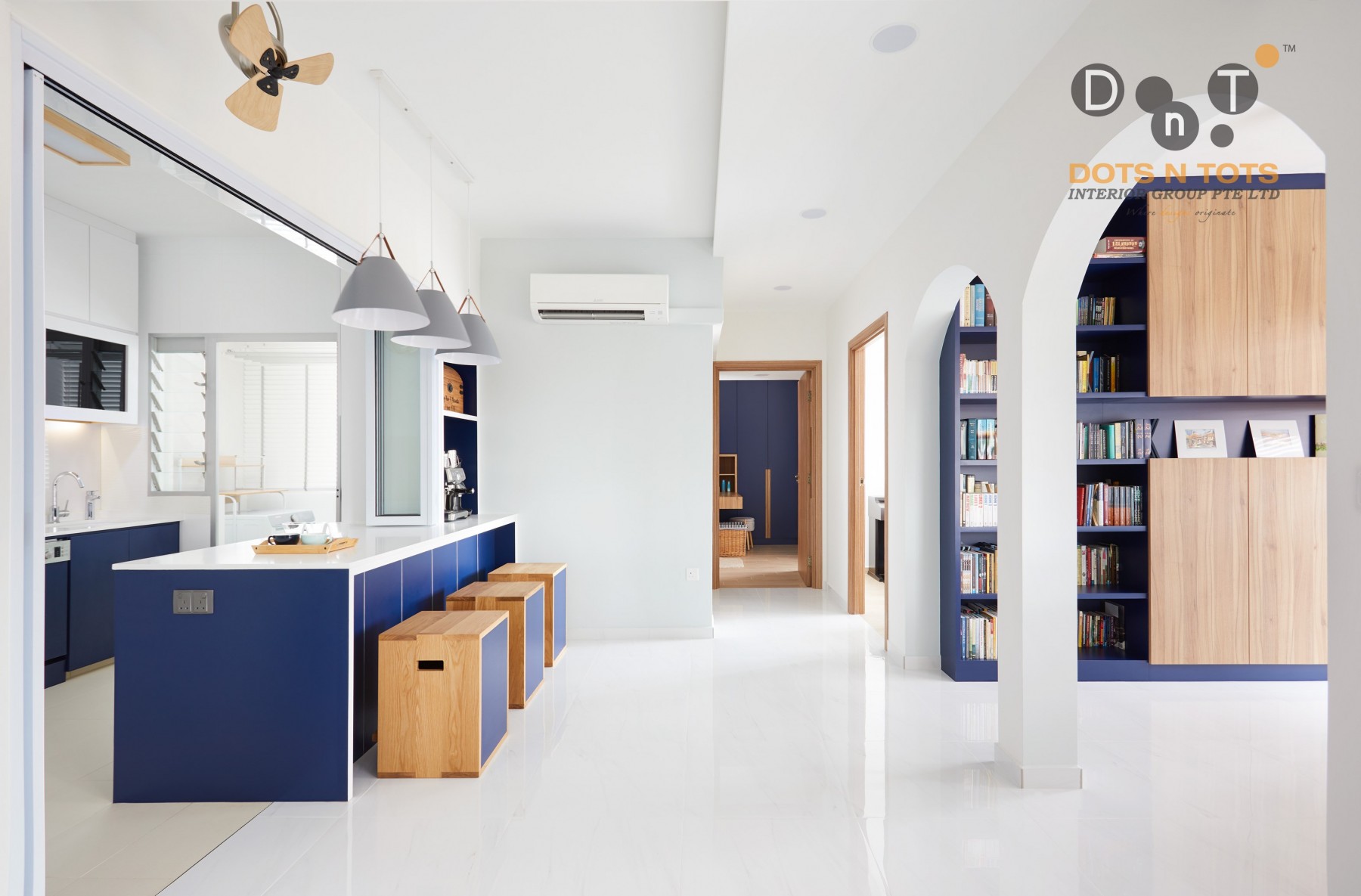

For example, built-in wardrobes provide ample storage without taking up additional floor space, while foldable furniture, such as wall-mounted tables and Murphy beds, can free up space when not in use. Clever use of vertical space, like installing high shelves or utilizing the space above cabinets, can significantly enhance the functionality of your apartment.
Proper layout planning is also crucial to make the most of every square meter and create a comfortable living environment. This involves strategically placing furniture and fixtures to maximize space and ensure smooth movement within the home. Open floor plans can create a sense of spaciousness, and using light colors can make a small space feel larger and more inviting.
By considering these factors and planning accordingly, you can create a functional, organized, and comfortable living space that makes the most of your small apartment.
4. Not Considering Long-Term Needs
A common mistake in home renovation is focusing solely on current needs without considering future requirements.
Assuming that you want to stay in your home for the long-term, your renovation should be flexible and adaptable to accommodate changes over time, such as a growing family or aging in place. Planning for the long term involves incorporating versatile design elements that can evolve with your needs and avoiding overly trendy features that might quickly become outdated.
For example, if you’re planning to start a family, knocking down walls to create an open-concept apartment might seem appealing now, but it may not be suitable once you have children.
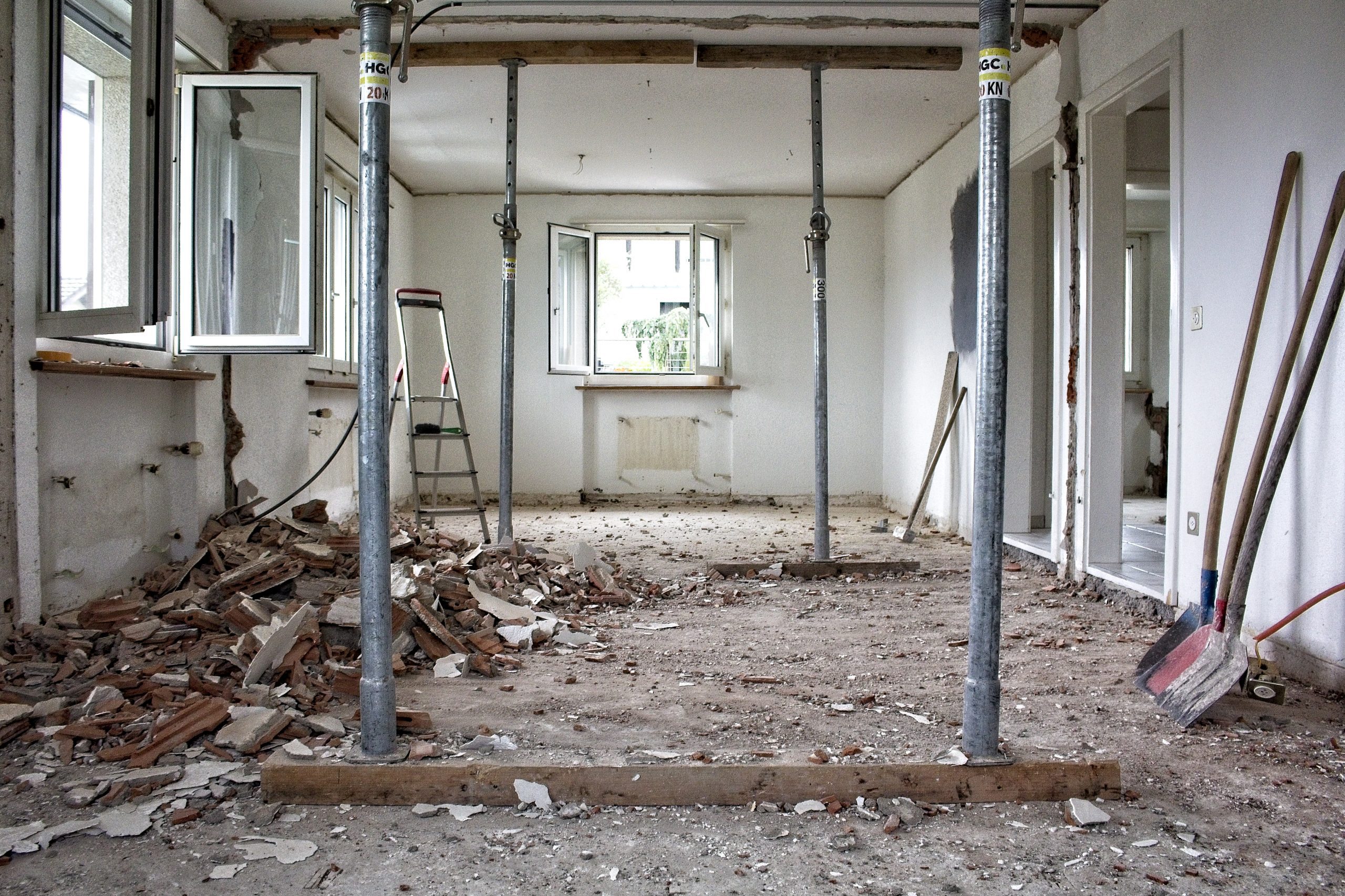

Consider how your space needs may change with time and plan accordingly. Opting for flexible layouts that can be easily modified, such as using sliding doors instead of permanent walls, allows you to adapt the space as your family grows.
Additionally, if you have elderly parents staying with you or if your parents may move in with you in the future, keep this in mind when renovating your home as well. For elderly folks, accessibility and safety are critical. Incorporating features like wider doorways, grab bars in bathrooms, and non-slip flooring can ensure your home remains comfortable and safe for older family members.
Lastly, opt for timeless design elements over trendy aesthetics. Neutral colors, classic furniture styles, and timeless architectural details not only enhance the longevity of your home’s appeal but also provide a blank canvas for personalization through decor and accessories.
By planning ahead and considering future needs, you can create a home that not only meets your current lifestyle but also adapts seamlessly to changes and remains functional and stylish for years into the future.
5. Choosing Aesthetics Over Functionality
While it’s crucial for your home to be aesthetically pleasing, ensuring functionality remains uncompromised is equally important. Striking a delicate balance between aesthetic appeal and practicality is key to achieving a successful renovation. Here, homeowners should strive to opt for durable, low-maintenance options that complement your lifestyle rather than blindly following trends or trendy design elements.
Here are some examples of design elements that may be high-maintenance and not the most functional…
Open shelving in kitchens
Open shelving in kitchens has gained popularity for its modern and airy aesthetic, allowing for easy access to everyday items and decorative displays. However, this design choice comes with practical considerations. Unlike closed cabinets, open shelves tend to accumulate dust and grease more quickly, as they are exposed to airborne particles and cooking residues.
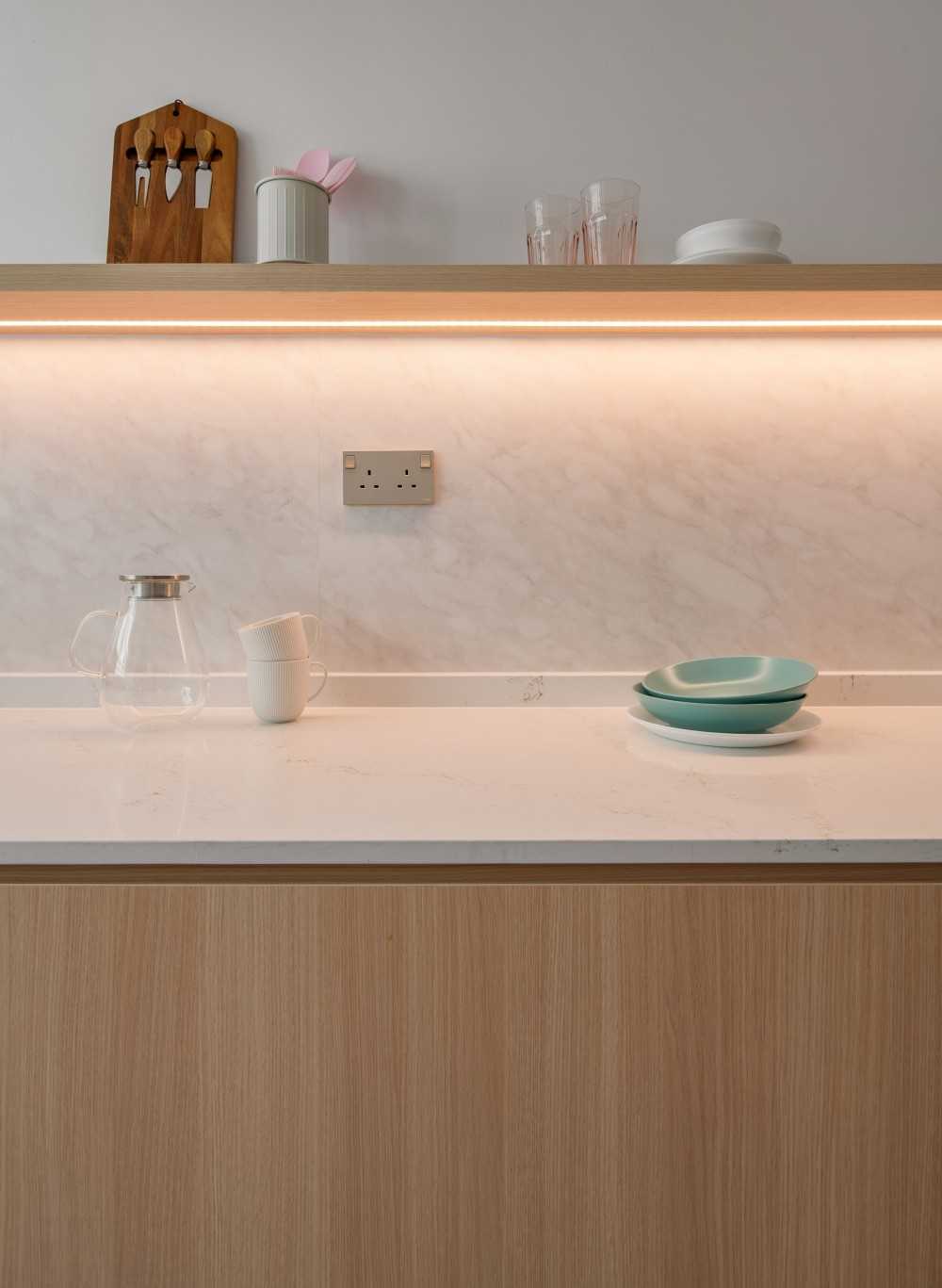

4-Room BTO @ Tampines ($50,000) by EZY Space
To maintain a neat and organized appearance, regular cleaning and careful organization are essential. Items displayed on open shelves are more visible, so arranging them neatly and wiping down surfaces frequently can help mitigate dust buildup. It’s also important to consider the types of items you store on open shelves—choosing functional pieces that are used frequently and are easy to clean can enhance both the aesthetic and practicality of this design feature.
Our recommendation? If you do want to opt for open shelving, consider incorporating some closed storage options as well. This allows you to balance the aesthetic appeal of open display with the practicality of concealed storage for less frequently used items or those that are more susceptible to dust and grease.
Fluted panels
Fluted panels, which feature vertical grooves or channels, have gained popularity in interior design for their stylish and textured look. However, one significant drawback is their tendency to accumulate dust and dirt within the grooves. This requires regular and thorough cleaning to keep the panels looking clean and well-maintained.
The channels in fluted panels create small crevices where dust particles can settle easily. Over time, if not cleaned regularly, this dust buildup can detract from the panel’s aesthetic appeal and make the entire space appear unkempt. To mitigate this issue, homeowners often find themselves needing to dust or vacuum the panels more frequently than smooth surfaces.
Furthermore, the cleaning process for fluted panels can be more time-consuming compared to flat surfaces. It typically involves using a soft cloth, brush, or vacuum cleaner with a brush attachment to reach into the grooves and remove accumulated dust effectively. For those who prioritize ease of maintenance, fluted panels may not be the most practical choice, despite their visual appeal.
Marble countertops
Marble countertops are a luxurious choice known for their beauty, yet they require regular sealing to prevent staining and etching from acidic substances like citrus and vinegar. This upkeep may not be feasible for high-traffic kitchens seeking practical durability.
For a more practical alternative, consider quartz countertops. Quartz offers the same elegant appearance as marble but with enhanced durability and minimal maintenance requirements. Engineered quartz countertops are non-porous, making them highly resistant to stains, scratches, and heat. They are also easy to clean and maintain, ideal for busy kitchens.
If you’re drawn to the aesthetic of marble but prefer a more low-maintenance option, you can also consider contact paper with marble prints or marble-look laminates.
First, contact paper can be applied to existing countertops for a temporary and cost-effective transformation, and they’re easy to wipe down and maintain. Since most contact paper is designed to be water-resistant and can be cleaned with a damp cloth or mild cleaning solution, this makes them suitable for everyday use in kitchens where spills and messes are common.
Alternatively, marble-look laminates are also a good substitute for marble counters. These laminates are typically resistant to stains, and easy to clean with regular household cleaners. They’re also available in a wide range of colors and patterns, allowing for greater design flexibility to suit different kitchen styles and preferences:
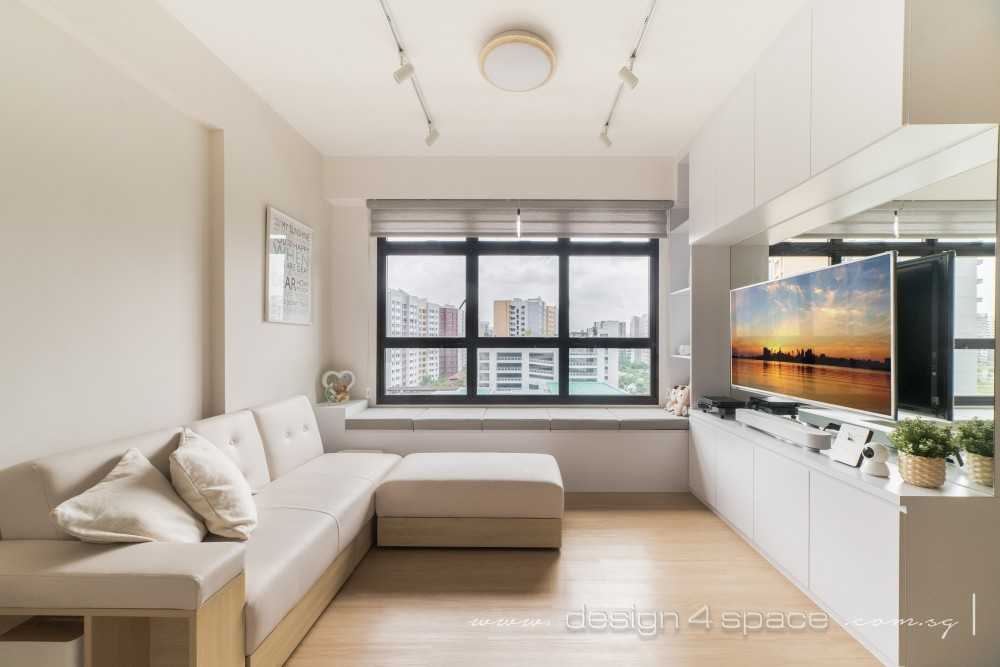

Canberra Eastlink ($45,000) by Design 4 Space Pte Ltd
High-gloss finishes
High-gloss finishes are favored for their reflective and modern appearance, adding a sleek and sophisticated touch to cabinets, countertops, or floors. However, their aesthetic appeal comes with a downside—they are highly susceptible to showing fingerprints, smudges, and scratches more prominently than matte or textured finishes.
The glossy surface of these finishes tends to highlight any imperfections or marks, requiring frequent cleaning to maintain a pristine appearance. Fingerprints and smudges, in particular, stand out vividly against the shiny surface, necessitating regular wiping down with a soft cloth and gentle cleaning solution.
Moreover, scratches on high-gloss surfaces can be more noticeable due to the contrast between the glossy finish and the exposed material underneath. This means extra care is needed to prevent abrasive materials or harsh cleaning agents from causing damage.
In contrast, matte or textured finishes offer a more forgiving option. They can mask minor imperfections and are generally easier to maintain, requiring less frequent cleaning and reducing the visibility of fingerprints and scratches. Matte finishes, for example, have a non-reflective surface that diffuses light, minimizing the appearance of marks and making them ideal for high-traffic areas or households with children and pets.
When choosing between high-gloss and matte/textured finishes, consider your lifestyle and maintenance preferences. While high-gloss finishes add a contemporary flair, they may require more effort to keep looking pristine compared to their matte counterparts.
Glass surfaces
Glass dining tables and coffee tables offer a sleek and contemporary look, often chosen for their ability to make spaces appear larger and more airy. The transparency of glass allows light to pass through, creating a sense of openness and enhancing the overall aesthetic of a room.
However, while glass tables are stylish and versatile, they require regular maintenance to preserve their pristine appearance. One of the main considerations is their susceptibility to fingerprints, smudges, and dust, which can be more noticeable on glass surfaces compared to other materials. Routine cleaning with a glass cleaner or a mixture of vinegar and water is recommended to keep these surfaces sparkling clean.
Moreover, glass tables can be vulnerable to scratches and chips if not handled with care. It’s important to use coasters for glasses and avoid placing heavy or abrasive objects directly on the surface. For protection against scratches, using placemats or table runners can also be beneficial. Otherwise, opt for dining tables and coffee tables made from other materials for a lower-maintenance option.
6. Not Planning for Contingencies
Renovations rarely go exactly as planned, which is why having a contingency plan is essential. Delays, additional costs, and unexpected issues such as structural problems or delivery delays can arise.
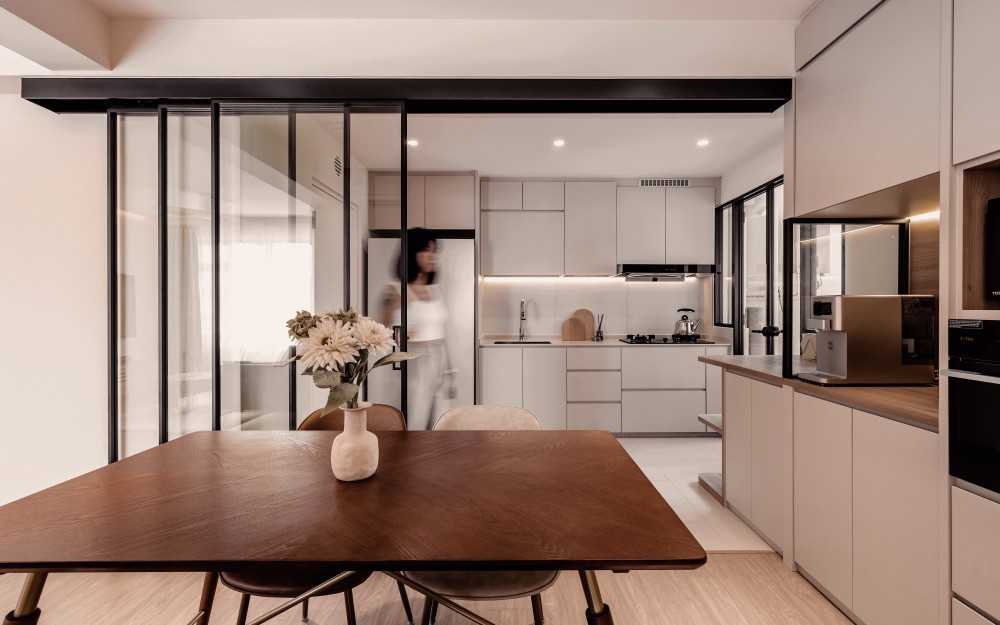

18A Circuit Road ($55,000) by Starry Homestead Pte Ltd
As such, you should always build flexibility into your renovation plan by setting realistic timelines and budgets that account for these possibilities. If you are renting with your partner before you move into your first home, for example, don’t attempt to time your renovation such that you can move in immediately after the renovation is done and hence save on your rent.
Instead, allow yourself a buffer period, even if you need to pay for an additional month’s lease on their rental to provide a buffer period. This extra time can be crucial, as delays such as structural issues or delivery delays are common in renovations.
Remember, it’s unrealistic to expect everything to run smoothly on schedule. At the end of the day, you don’t want to have to deal with the massive amount of stress you’ll face if you have to move out of your rental home, but your new home isn’t ready yet.
A final word on mistakes to avoid in your renovation
When it comes to managing your first home renovation, foresight and careful planning are invaluable.
By sidestepping common pitfalls and embracing practical strategies, you can ensure your renovation journey is as smooth as possible. From setting realistic budgets and timelines to choosing durable materials and seeking professional advice, every decision plays a pivotal role in shaping your dream home.
Remember to plan meticulously, hire qualified professionals, and balance aesthetics with functionality. Finally, take the time to enjoy the process and the end result of your renovation, knowing that you’ve created a space that meets your needs and enhances your quality of life!
Want to check out home renovation projects for more inspiration? Browse interior design ideas on Hometrust, or click the button below to get connected with expert designers!
Renovating soon? Let Hometrust recommend the best interior designers.
If you are reading this, you are probably wondering how you can create your dream home.
Here’s the thing, everyone’s needs and requirements for their home renovation is different. A designer that may work for someone else, may not quite work for you.
At Hometrust, we’re here to help match top rated designers, recommended by past homeowners to you through our data-driven and matching algorithm.
Whether you are looking for partial renovation or a full fledge overhaul, we’ll be able to recommend you top designers to match your renovation requirements and lifestyle.
Recommendations and free and you can simply start by helping us understand your needs below!
Get RecommendationsRenovate safe!
The Hometrust Team


